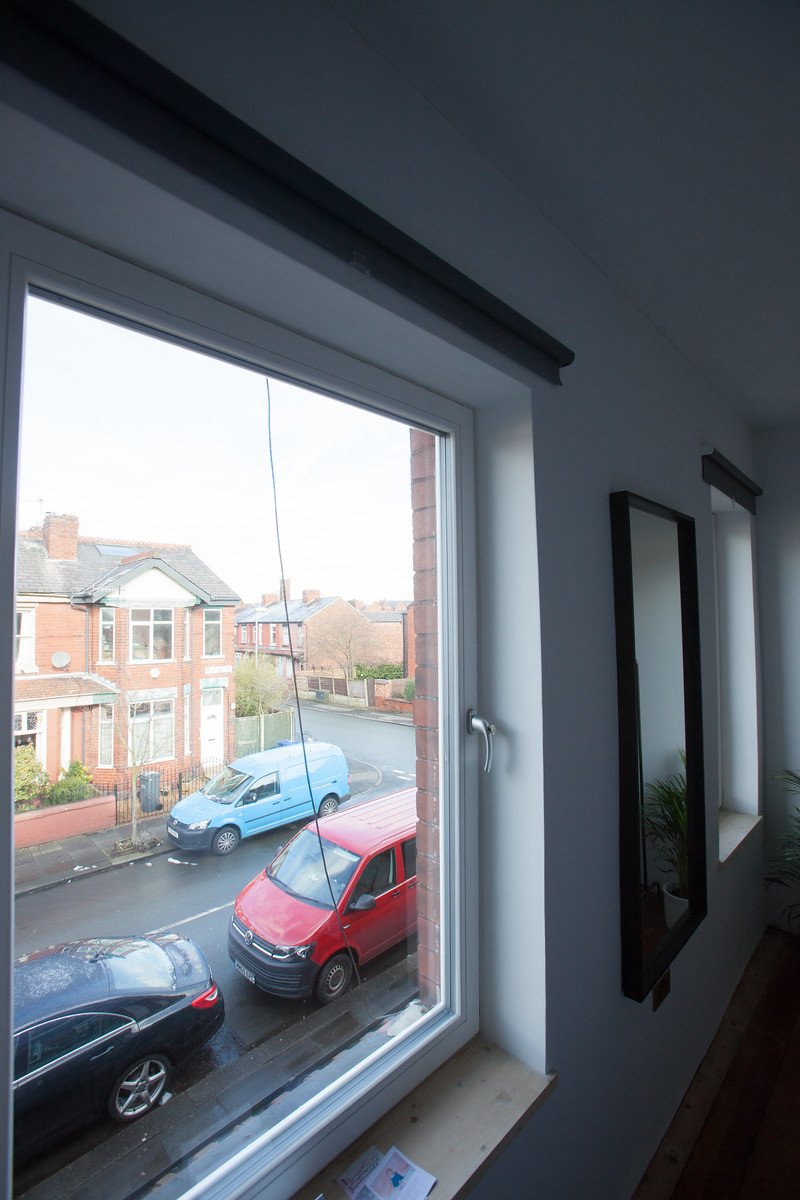Mid-terrace in Levenshulme
Why retrofit?
Having recently bought a mid-terrace house in Levenshulme, Greater Manchester, that needed a lot of work, the owner wanted to remodel and modernise it. They also wanted to have lower future bills and carbon emissions.
What work was done?
External wall insulation, internal wall insulation, new triple glazed windows & doors, floor insulation, loft insulation, room in roof insulation, MVHR (mechanical ventilation with heat recovery system)
Upgraded mid-terrace home in Levenshulme, Greater Manchester
Upgrade measures to make the home more energy efficient and comfortable
All of the old UPVC double glazed windows were drafty and beyond repair. The owner decided to replace all of the windows with triple glazed timber windows, single pane inward opening casements which kept the cost of the windows down, gave more light into the property and achieved the modern look that the customer wanted.
The original sloping window at the back of the house was also refurbished to bring more light into the room. The width of the space between the neighbour and the rear side wall of the house meant that the decision was taken to the leave the soil stack and waste pipes where they were and enclose them in the insulation covered with larch timber panels for access. This also acted as an attractive visual feature with the 180mm of white rendered woodfibre insulation.
To further tidy up the rear of the property and make future access easier and safer, rather than extending the roof to cover the insulation it was capped with a stainless steel fabricated parapet gutter.
the old UPVC windows were drafty and beyond repair so The owner decided to replace Them with triple glazing.
Most of the house had a traditional loft, which was insulated with 400mm of loft roll. This is one of the cheapest effective ways of reducing heat loss. In the small back bedroom the ceiling was insulated at roof level and a 2m sleeping desk installed, creating more useable space in the room and convenient access to the attic which contains the heat recovery ventilation system.
The main floor of the house was insulated with recycled glass pumice underneath the floorboards. The kitchen floor turned out to be a very thin concrete floor and was replaced with 300mm of extruded polystyrene insulation, with a vapour barrier and two layers of moisture resistant chipboard and an engineered timber floor finish. The front wall was insulated internally.
The advantage of doing all of the insulation at the same time was to make sure that all of the cold bridges at joins between different elements could be dealt with efficiently and cost effectively.
Their heating bill for the year from March 2021 to March 2022 was £215.52.
photos of the mid-terrace home in Levenshulme Following the upgrades





